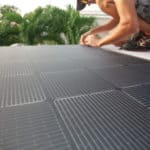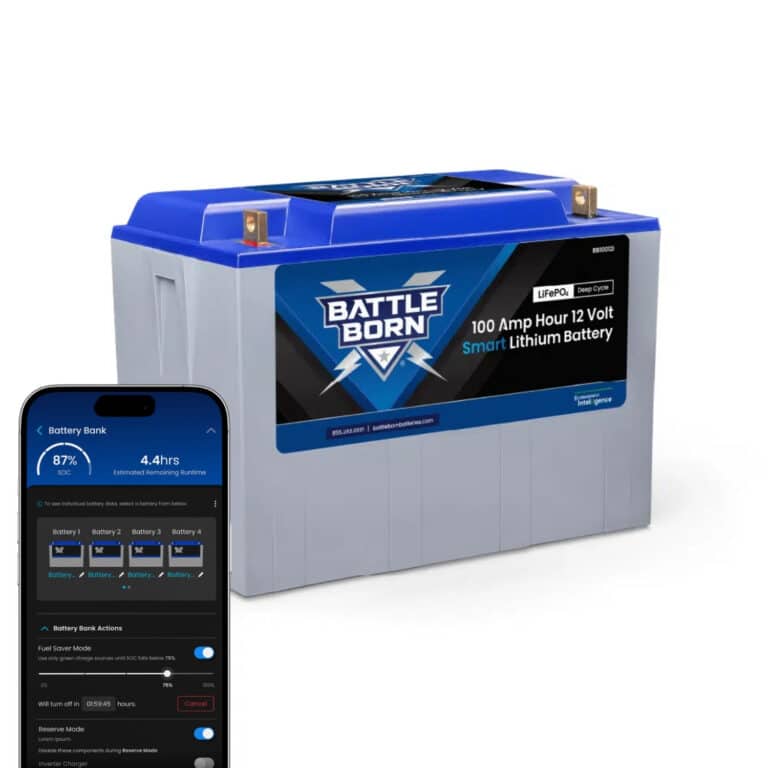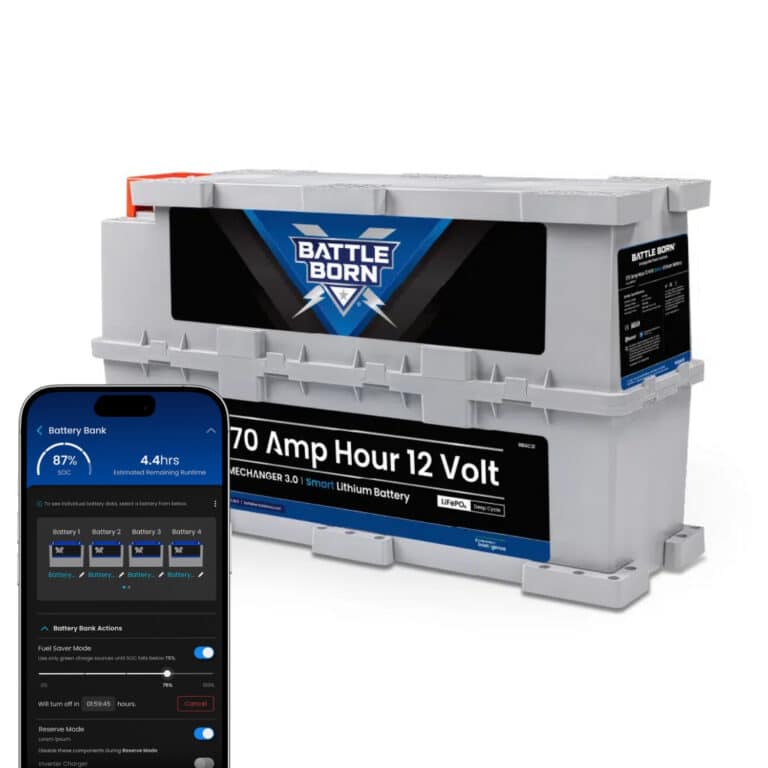
MENUMENU
TALK TO AN EXPERT
Special Hours: 7AM – 6PM PST
TALK TO AN EXPERT
Special Hours: 7AM – 6PM PST
After reviewing the differences between lead acid and lithium batteries in your marine electrical system, it’s time to make a decision. While there are many advantages to upgrading your marine electrical system with LiFePO4 batteries, there are a few key things to consider. Before upgrading, make sure you determine if you can and should switch to lithium power.
Before upgrading your boat power with lithium-ion batteries, here are a few things you should consider.
Although the 8D Battle Born Battery is a drop-in replacement for standard 8D lead-acid batteries, you must ensure the rest of your system is compatible. Evaluating each component of your electrical system and ensuring it has the correct parameters from the beginning will save you time and money in the long run.
It is likely that the charging profiles on your old lead acid batteries are different than those of your new lithium-ion batteries. Ensure that your charger is capable of accommodating the new charging profile. Additionally, lead-acid batteries require temperature-related voltage compensation. Remove this function from your charging devices before using them with LiFePO4 batteries.
If you are using electric anchor windlasses, electric deck winches, bow and stern thrusters, or other devices that require huge inrush currents, you may need a separate battery bank. This is especially important if the lithium batteries you are using have internal battery management systems (BMS) that are designed to protect them from these types of currents.
With lead acid batteries, a simple way to roughly understand the state of charge is by evaluating their voltage. This is because the voltage would decrease as the battery state of charge decreased. While this was not a perfect measurement, it usually was accurate enough.
On the other hand, with the LiFePO4 technology, this is not an option as the voltage stays constant until the final state of charge and then drops off rapidly. Lithium batteries require an installed battery monitor to record their state of charge.
Most boats have a diesel motor with an alternator that can be used to recharge the house electrical bank. Before upgrading to lithium batteries, it’s essential to ensure you can integrate alternator charging safely. An unexpected BMS shutdown can severely damage both your alternator and your boat’s electronics. This means incorporating a DC-to-DC charger to charge your house bank from the engine starting battery or utilizing an advanced alternator regulator to charge your batteries safely.
Some boats have an emergency parallel switch that, when engaged, will connect the house battery to the engine start battery. This function would allow your engine battery to restart from your house lead acid batteries in a situation where your start battery died. However, this is not recommended with LiFePO4 batteries, and this function would need to be removed and replaced with another means, such as a DC-to-DC charger.
Inside of all Battle Born Batteries is a battery management system (BMS). The BMS works to protect the battery by monitoring for unsafe operating conditions and shutting the battery down if any of them are met. While this protects the battery, if a shut-down occurs, your vessel will be left without any power. This can affect bow thrusters, the autopilot, and other critical electronics. It’s essential that you have a plan in place to continue operating until the batteries are up and running again.

Although there are many things to consider before making the switch to lithium, once you have the proper components and setup, there are many benefits to making the switch.
First and foremost, battery anxiety will become a thing of the past! With LiFePO4 batteries, you no longer have to constantly monitor them. These batteries are happy and capable of operating in a partial state of charge. Additionally, LiFePO4 batteries are almost 99% efficient, requiring less power to recharge than they can generate, as opposed to lead-acid batteries. These batteries are also able to be recharged much more quickly as they can accept a higher charge rate throughout the charging process.
Finally, the efficiency of LiFePO4 batteries does not stop at the charging capabilities. With more usable capacity in the same physical space, you can have far more power with even less weight than your lead acid batteries offered. Combine that with a 3,000-5,000-cycle lifespan, and LiFePO4 batteries will keep you out on the water, worry-free, for years to come!
Check out the full Marine 101 series on our YouTube channel or through the Academy page on our website. If you have further questions or need help designing the perfect marine power system, our technical sales team would love to help! You can reach them by calling (855) 292-2831 or emailing [email protected].
Shop Best Sellers








Ask a technical specialist now at 855.292.2831
Stay in the Know